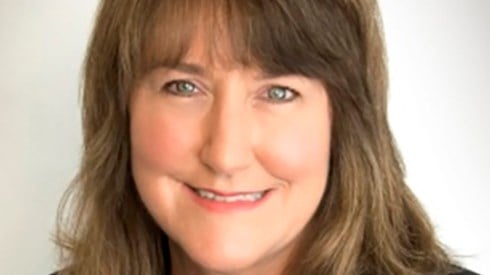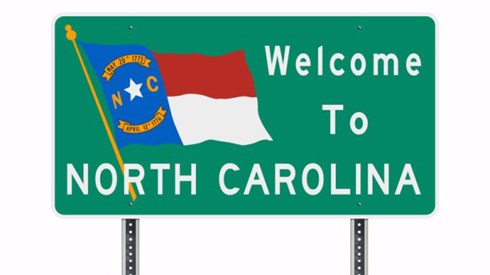North Carolina's Kait Chase Is Fascinated with RRGs and Captives

September 11, 2019

Kait Chase, risk retention group analysis manager for the North Carolina Department of Insurance (NCDOI), Captive Insurance Companies Division, is responsible for the licensing and regulation of North Carolina risk retention groups (RRGs). Previously, Ms. Chase worked as an auditor in public accounting. Ms. Chase joined the North Carolina Department of Insurance, where she also participates in the ongoing promotion of North Carolina as a captive domicile, in 2016.
Below, she discusses a wide range of issues, including the requirements that RRGs have to meet to be licensed in the state, the growth of North Carolina RRGs, and the types of risks RRGs are covering.
How many risk retention groups are currently licensed in North Carolina, and how has that number changed over the years?
There are 10 risk retention groups currently licensed in North Carolina. In 2013, the North Carolina General Assembly passed the North Carolina Captive Insurance Act, which allowed the formation and licensure of captive insurance companies, including risk retention groups. The first risk retention group was licensed during 2016, and the number of North Carolina-domiciled RRGs has steadily increased since then.
How much premium volume did North Carolina RRGs generate last year, and how does that compare to prior years?
During 2018, North Carolina RRGs wrote $83 million in premiums, which is a $51 million increase from what was written in 2017. North Carolina has seen a steady increase in premiums written by domiciled RRGs year after year, primarily due to the increase in the number of RRGs licensed in North Carolina. North Carolina licensed four new RRGs in 2018, which contributed to the premium increase as well as the ongoing development of the previously licensed RRGs.
What factors have led to the formation of RRGs?
RRGs were created to serve the underserved. The 1970s and 1980s experienced a hard commercial insurance market, which generated an increase in liability premiums. In order to address the ongoing unaffordability concerns, Congress passed the Liability Risk Retention Act (LRRA) to allow the formation of RRGs. These groups gave members access to lower rates, stability of coverage, and more active participation in risk management programs.
Nationwide, the number of RRGs has fallen in recent years. About 220 RRGs now are operating compared to about 260 just over a decade ago. What factors have led to that decline?
Because North Carolina is a newer RRG domicile, our state has not experienced a decline but, instead, has seen steady growth in formations year after year. However, industry-wide, high premiums, as well as unavailability of coverage, often drive the RRG cycle. Since the inception of the LRRA, RRG formations have stagnated during soft market conditions, or times when premiums are relatively low and insurance is widely available.
Is that decline over, and do you anticipate future growth in the number of RRGs both in North Carolina as well as in other captive domiciles? If so, what will lead to future growth?
RRG growth has been tied to a hardening market after a prolonged soft market. I would continue to look to market and economic conditions as they are good indicators of the RRG industry and its future growth. Overall, RRG premiums continue to increase, showing that RRGs remain a vital foundation in the marketplace. As North Carolina prides itself on its fair regulation, as well as customer service, we would welcome discussions with any potential future RRG applicants to increase the growth of North Carolina's RRG footprint.
What kind of employers and organizations have set up RRGs in North Carolina?
North Carolina is currently the domicile to multiple RRGs that offer different lines of coverage that range from medical professional liability, home warranty liability, commercial auto liability, and others.
What are the most popular risks covered through North Carolina RRGs?
Medical professional liability and commercial auto liability are the most popular risks covered through North Carolina RRGs, which is similar to the industry as a whole.
What are the licensing requirements that North Carolina RRGs must meet to do business? Have state lawmakers modified those requirements in recent years, and are future modifications expected?
There are multiple licensing requirements that North Carolina RRGs have to meet in order to be licensed within our state, including maintaining an initial capital of $1 million. We encourage all potential RRGs to first conduct a self-assessment of their proposed business plan to see if it meets North Carolina's licensing requirements. In order to conduct this assessment, I've found one of the most helpful tools is on the department's website, www.nccaptives.com. On that site, we have a program that allows a prospective applicant to view the NCDOI requirements along with the NC general statutes associated with the type of captive they would like to form. We always encourage potential applicants to contact the department to arrange a meeting to discuss the proposed RRG and to obtain feedback from the department.
There have not been any recent modifications to the RRG statutory requirements, but the department and the North Carolina Captive Insurance Association continually review the current laws and will propose changes as necessary to maintain modern, relevant RRG laws.
Do you think Congress should expand the Liability Risk Retention Act to allow RRGs to cover property risks? Is there much interest among RRGs in offering property coverages to their member-policyholders?
The push to expand the Liability Risk Retention Act to cover property risks has been an ongoing discussion for many years. There are two sides to this discussion, both diametrically opposed. Expansion proponents believe it is necessary because it would allow RRGs to act in the property market as they have in the liability market, combating the unaffordability and unattainability they see. Opponents hold there isn't the crisis situation within the commercial property market as there was in the liability market that led to the LRRA; therefore, expansion isn't necessary. As this change would materially change the RRG market, I'm very interested in its continued evolution and the ongoing discussions between these two factions.
What are some of the more unusual experiences you have had as an RRG regulator?
One of the biggest changes for me has been the transition from public accounting to working within the NCDOI's Captive Insurance Companies Division. I find the participation and promotion of this division to be extremely fulfilling as I have the support of the current administration under Commissioner Mike Causey as well as a knowledgeable and collaborative staff. In addition, I am able to attend captive conferences and interact with the captive world—from potential RRG applicants, to service providers, to other regulators. All of this has led to a rewarding experience.
What do you enjoy most about being an RRG regulator?
What I enjoy the most about being an RRG regulator is that my role and the industry are constantly evolving. It is rewarding to participate in the marketing and promotion of the North Carolina Captive Insurance Companies Division program as well as the ongoing regulation and licensing of RRGs. Both practices allow me to interact with people within the captive industry, and that duality keeps me engaged. I am also fascinated by the ongoing developments within the captive market and staying up to date with these changes through reading, webinars, and conferences. These activities allow me to continuously increase my insurance knowledge base while engaging with other insurance professionals.
(Photo of Ms. Chase, above, is courtesy of the North Carolina Department of Insurance.)
September 11, 2019





